Measuring Balanced Armature Drivers for Hi-Res Audio Earphones
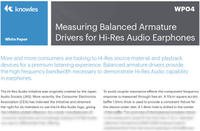
More and more consumers are looking to Hi-Res source material and playback devices for a premium listening experience. Balanced armature drivers provide the high frequency bandwidth necessary to demonstrate Hi-Res Audio capability in earphones.
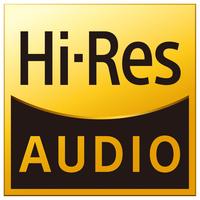 The Hi-Res Audio initiative was originally created by the Japan Audio Society (JAS). More recently, the Consumer Electronics Association (CEA) has indorsed the initiative and obtained the right for its members to use the Hi-Res Audio logo, giving the initiative global influence. As a result, manufacturers of consumer earphones are increasingly looking to Hi-Res Audio as a way to differentiate their offering.
The Hi-Res Audio initiative was originally created by the Japan Audio Society (JAS). More recently, the Consumer Electronics Association (CEA) has indorsed the initiative and obtained the right for its members to use the Hi-Res Audio logo, giving the initiative global influence. As a result, manufacturers of consumer earphones are increasingly looking to Hi-Res Audio as a way to differentiate their offering.
Hi-Res Audio is a set of performance standards for both digital and analog audio devices. For analog devices a demonstrated capability to 40kHz is required, though in the case of earphones the measurement methods are left to the manufacturer. For in-ear earphones the standard method for measuring frequency response is not capable of detecting output to 40kHz. Therefore new measurement methods are needed. This white paper describes one such method and shows how balanced armature drivers can be used to create Hi-Res Audio earphones.
Measurement Method for Balanced Armature Drivers
Components for in-ear earphones are typically measured using an acoustic coupler, most commonly the IEC 60318-4, or “711,” coupler. Available standard 711 couplers do not support driver frequency response measurements above about 8kHz due to their resonant frequency, and are therefore unsuitable for checking performance for Hi-Res Audio. An alternative method was developed by Knowles to measure the frequency response of balanced armature drivers to 40kHz.
To avoid coupler resonance effects the component frequency response is measured through free air. A 10cm square acrylic baffle 1.3mm thick is used to provide a consistent fixture for the device under test. A 1.4mm hole is drilled in the center of the baffle. The port tube of the balanced armature driver to be measured is press-fit into this hole. A 1/8th inch diameter reference microphone (GRAS 40DP pressure type) is positioned 6mm from the sound opening in the baffle and at a 90 degree angle. 6mm is chosen as the spacing because it provides good signal to noise at typical earphone drive levels and is also a fair approximation of the distance from an in-ear speaker component to a user’s ear canal. 100mVrms, a typical drive level in a portable music player or smartphone, is chosen as the test voltage.
Figures 1 and 2 show the measurement set-up. Note that balanced armature drivers are designed to be very small and to deliver a pleasing audio response into a sealed ear canal. In free air the bass output will by design be much lower. Therefore the free air measurement is valid only for high frequencies. Of course the midrange and bass response of either drivers or assembled earphones is easily measured by standard techniques.
Figure 1: Microphone positioning for Hi-Res Audio measurement
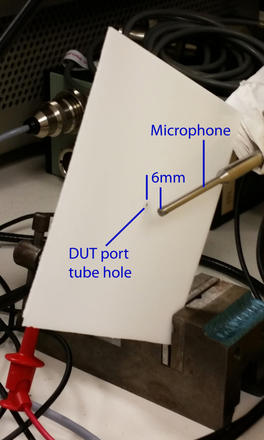
Figure 2: Device under test mounted to baffle.
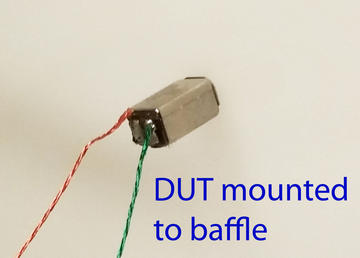
Measurement Results
For this white paper four different balanced armature drivers were measured.
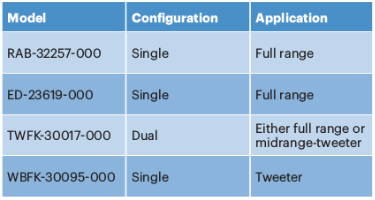
Full range drivers are typically used by themselves in a balanced armature earphone. Tweeters or midrange-tweeters are used in combination with additional drivers for bass and midrange. These can be other balanced armature drivers or in combination with a dynamic speaker. The latter is often referred to as a “hybrid” configuration. Adopting the hybrid configuration can be an economical way to turn an ordinary dynamic earphone into one meeting the Hi-Res Audio initiative. See Figure 3.
Figure 3: Example hybrid earphone.
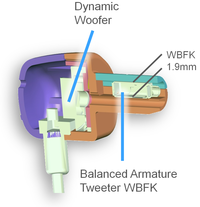
Graph 1: Balanced armature measurements to 40KHz
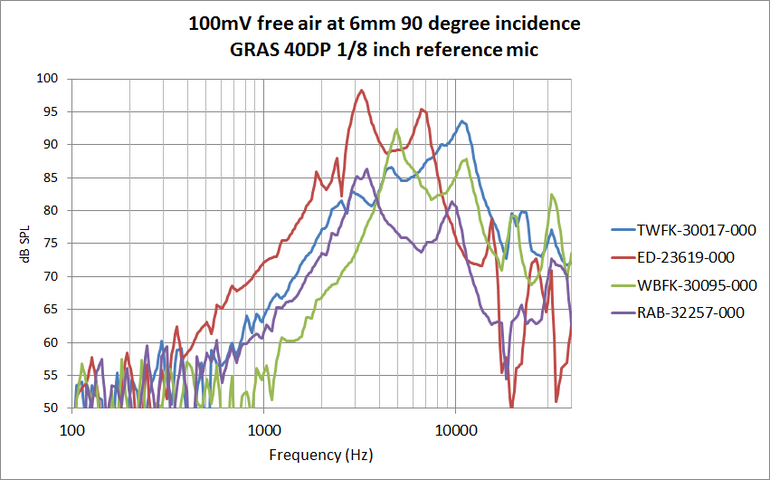
As shown by Graph 1 all four balanced armature drivers demonstrate output to 40kHz and are therefore suitable for use in creating Hi-Res Audio earphones. Special note is made of the exceptionally small size and high frequency performance of the WBFK (measuring just 5.0 x 2.7 x 1.9mm) which make it ideal for creating both small multi-way balanced armature earphones and hybrid earphones for Hi-Res Audio. In either configuration careful attention to the earphone acoustic design is necessary to demonstrate Hi-Res Audio capability in the finished product. See Figure 4 and Graph 2 for an example of a Knowles reference design earphone demonstrating 40KHz output when measured with the same free air technique. Knowles’ engineers can assist in the acoustic tuning of earphones using balanced armature drivers to achieve Hi-Res Audio performance.
Figure 4: Example Knowles reference design earphone with BA meeting Hi-Res Audio requirements
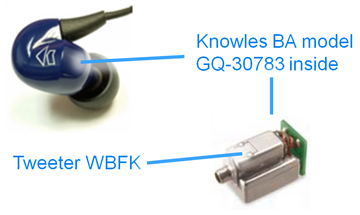
Graph 2: Knowles reference design earphone with BA meeting Hi-Res Audio requirements
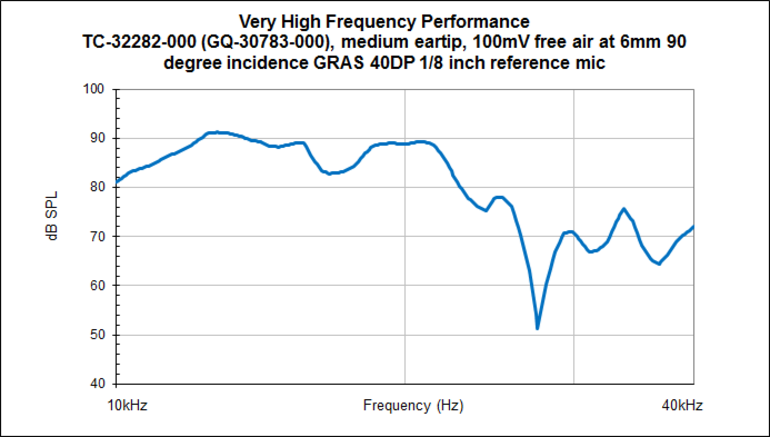
Conclusion
The demand for Hi-Res music is increasing, and with it, products to take full advantage of the increased fidelity. The Consumer Electronics Association expects that shoppers will look for the Hi-Res Audio logo when choosing listening devices. For earphones, the logo may be displayed on products with demonstrated output to 40kHz. Using measurement techniques devised by Knowles, this capability may be proved in both individual Knowles balanced armature drivers and in finished earphones. In particular, Knowles tweeters produce excellent high frequency output which delivers both a premium sound and meets the High-Res Audio requirement in balanced armature or hybrid earphones.
About the Author:
Tim Wickstrom is the Global Application Engineering Manager, Specialty Products for Knowles Corporation. He can be reached at tim.wickstrom@knowles.com. Knowles is a global supplier of advanced micro-acoustic, specialty components and human-interface solutions, including hearing-aid components, MEMS microphones, speakers, receivers, transducers, capacitors and oscillators, for use in the mobile communications, consumer electronics, medical technology, military/space and other industrial end-markets. Headquartered in Itasca, IL, USA, Knowles also operates satellite facilities in Denmark, the United Kingdom, Japan, South Korea, Taiwan and Malaysia.
 The Hi-Res Audio initiative was originally created by the Japan Audio Society (JAS). More recently, the Consumer Electronics Association (CEA) has indorsed the initiative and obtained the right for its members to use the Hi-Res Audio logo, giving the initiative global influence. As a result, manufacturers of consumer earphones are increasingly looking to Hi-Res Audio as a way to differentiate their offering.
The Hi-Res Audio initiative was originally created by the Japan Audio Society (JAS). More recently, the Consumer Electronics Association (CEA) has indorsed the initiative and obtained the right for its members to use the Hi-Res Audio logo, giving the initiative global influence. As a result, manufacturers of consumer earphones are increasingly looking to Hi-Res Audio as a way to differentiate their offering.Hi-Res Audio is a set of performance standards for both digital and analog audio devices. For analog devices a demonstrated capability to 40kHz is required, though in the case of earphones the measurement methods are left to the manufacturer. For in-ear earphones the standard method for measuring frequency response is not capable of detecting output to 40kHz. Therefore new measurement methods are needed. This white paper describes one such method and shows how balanced armature drivers can be used to create Hi-Res Audio earphones.
Measurement Method for Balanced Armature Drivers
Components for in-ear earphones are typically measured using an acoustic coupler, most commonly the IEC 60318-4, or “711,” coupler. Available standard 711 couplers do not support driver frequency response measurements above about 8kHz due to their resonant frequency, and are therefore unsuitable for checking performance for Hi-Res Audio. An alternative method was developed by Knowles to measure the frequency response of balanced armature drivers to 40kHz.
To avoid coupler resonance effects the component frequency response is measured through free air. A 10cm square acrylic baffle 1.3mm thick is used to provide a consistent fixture for the device under test. A 1.4mm hole is drilled in the center of the baffle. The port tube of the balanced armature driver to be measured is press-fit into this hole. A 1/8th inch diameter reference microphone (GRAS 40DP pressure type) is positioned 6mm from the sound opening in the baffle and at a 90 degree angle. 6mm is chosen as the spacing because it provides good signal to noise at typical earphone drive levels and is also a fair approximation of the distance from an in-ear speaker component to a user’s ear canal. 100mVrms, a typical drive level in a portable music player or smartphone, is chosen as the test voltage.
Figures 1 and 2 show the measurement set-up. Note that balanced armature drivers are designed to be very small and to deliver a pleasing audio response into a sealed ear canal. In free air the bass output will by design be much lower. Therefore the free air measurement is valid only for high frequencies. Of course the midrange and bass response of either drivers or assembled earphones is easily measured by standard techniques.
Figure 1: Microphone positioning for Hi-Res Audio measurement

Figure 2: Device under test mounted to baffle.

Measurement Results
For this white paper four different balanced armature drivers were measured.

Full range drivers are typically used by themselves in a balanced armature earphone. Tweeters or midrange-tweeters are used in combination with additional drivers for bass and midrange. These can be other balanced armature drivers or in combination with a dynamic speaker. The latter is often referred to as a “hybrid” configuration. Adopting the hybrid configuration can be an economical way to turn an ordinary dynamic earphone into one meeting the Hi-Res Audio initiative. See Figure 3.
Figure 3: Example hybrid earphone.

Graph 1: Balanced armature measurements to 40KHz

As shown by Graph 1 all four balanced armature drivers demonstrate output to 40kHz and are therefore suitable for use in creating Hi-Res Audio earphones. Special note is made of the exceptionally small size and high frequency performance of the WBFK (measuring just 5.0 x 2.7 x 1.9mm) which make it ideal for creating both small multi-way balanced armature earphones and hybrid earphones for Hi-Res Audio. In either configuration careful attention to the earphone acoustic design is necessary to demonstrate Hi-Res Audio capability in the finished product. See Figure 4 and Graph 2 for an example of a Knowles reference design earphone demonstrating 40KHz output when measured with the same free air technique. Knowles’ engineers can assist in the acoustic tuning of earphones using balanced armature drivers to achieve Hi-Res Audio performance.
Figure 4: Example Knowles reference design earphone with BA meeting Hi-Res Audio requirements

Graph 2: Knowles reference design earphone with BA meeting Hi-Res Audio requirements

Conclusion
The demand for Hi-Res music is increasing, and with it, products to take full advantage of the increased fidelity. The Consumer Electronics Association expects that shoppers will look for the Hi-Res Audio logo when choosing listening devices. For earphones, the logo may be displayed on products with demonstrated output to 40kHz. Using measurement techniques devised by Knowles, this capability may be proved in both individual Knowles balanced armature drivers and in finished earphones. In particular, Knowles tweeters produce excellent high frequency output which delivers both a premium sound and meets the High-Res Audio requirement in balanced armature or hybrid earphones.
About the Author:
Tim Wickstrom is the Global Application Engineering Manager, Specialty Products for Knowles Corporation. He can be reached at tim.wickstrom@knowles.com. Knowles is a global supplier of advanced micro-acoustic, specialty components and human-interface solutions, including hearing-aid components, MEMS microphones, speakers, receivers, transducers, capacitors and oscillators, for use in the mobile communications, consumer electronics, medical technology, military/space and other industrial end-markets. Headquartered in Itasca, IL, USA, Knowles also operates satellite facilities in Denmark, the United Kingdom, Japan, South Korea, Taiwan and Malaysia.
